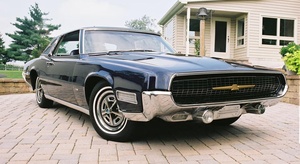So I did a test and tune yesterday, and got some good (in quality, but bad in result) information, and I'm turning to your folks for some help.
Car
1996 BMW 318ti
Stock style limited slip - could probably use a rebuild
Tires: 245/40 Hoosier A6s - well worn on 17x8.5 K1s with 12mm spacer in front
Conditions
Low to mid 60s, sunny, all day... lots of wind
Airport asphalt, bump in a few places
Starting Setup
Front
Vorshlag camber plates, max caster, max camber (-3.2ish) with 1/8" toe out
6" 550lb Eibach springs on M3 struts with new Koni yellow inserts (off the shelf for 1996 M3)
Rebound at one full turn down from full stiff
Eibach 28mm sway bar on full stiff using M3 endlinks
Ride height - 13" (from wheel center to fender lip)
36psi
Rear
650lb TCK springs
3-year old Koni singles (off the shelf for 1996 318ti)
EDIT - Rebound at 25% from full soft
Stock Sport rear sway bar (16mm)
Ride Height - 12.625" (from wheel center to fender lip)
Alignment is wherever those settings put me - can't do much about that
32psi
End-of-day Setup
Front
Set the sway bar to full soft
Rebound set to half turn up from full soft
34psi
Rear
Ride Height - 12.875"
31psi
So now that you have information overload, I'll get to the problem.
I had several people drive the car, and we all had the same initial impression - too much push on the front end. The car wouldn't rotate, and if driven hard, would just understeer. Car was really picking up the inside front, and in several spots felt like it was trying to get on two wheels. The back of the car was very bouncy going over bumps in the "grippiest" corner. The car felt so bad that I raised the rear ride height about a 1/4" to in the event there was contact making the car want to get up on two.
Data for the morning session showed a peak steady sate G-load at a laughable .83g's.
After lunch, I put the front sway bar to full soft, then softened the front springs, then lowered pressure. All of these things helped. The car wasn't picking up the inside front as high, and grip was better. Car was still bouncy in the back, and still "felt" like it wanted to get on two wheels in the harder corners.
Data for the afternoon showed an improved, but still not-so-great peak G-load of .95g's.
On this same surface, in slightly warmer conditions, I've pulled 1.1g's on 225mm street tires.
Despite lessening the push, the car still would not rotate, even with power (or what little the 318ti has).
I'm planning on upping the rear rebound to try to keep the back end from bouncing so much and in an attempt to get more rotation (couldn't adjust at the track), but does anyone else have any ideas as to why the car seems to be handling so poorly? The worst part is that the car feels like it wants to go over - it really shakes your confidence.
I know I'm pushing spring rates on off the shelf Konis, but I didn't think it should make things this bad.
Thanks!












 Final front camber was roughly -4° front, -2.5° rear
Final front camber was roughly -4° front, -2.5° rear




















